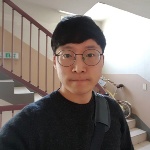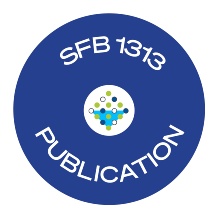New SFB 1313 publication (University of Stuttgart), published in European Geosciences Union (EGU). The work has been developed within the SFB 1313 research projects B05 and Z02 (PML).
Authors
- Dongwon Lee (University of Stuttgart, SFB 1313 research project B05)
- Nikolaos Karadimitriou (University of Stuttgart, SFB 1313 resarch project Z02)
- Matthias Ruf (University of Stuttgart)
- Holger Steeb (University of Stuttgart, SFB 1313 research projects B05, C05, Z02)
Abstract
Studying porous rocks with X-ray computed tomography (XRCT) has been established as a standard procedure for the non-destructive characterization of flow and transport in porous media. Despite the recent advances in the field of XRCT, various challenges still remain due to the inherent noise and imaging artifacts in the produced data. These issues become even more profound when the objective is the identification of fractures and/or fracture networks. One challenge is the limited contrast between the regions of interest and the neighboring areas, which can mostly be attributed to the minute aperture of the fractures. In order to overcome this challenge, it has been a common approach to apply various digital image processing steps, such as filtering, to enhance the signal-to-noise ratio. Additionally, segmentation methods based on threshold/morphology schemes have been employed to obtain enhanced information from the features of interest. However, this workflow needs a skillful operator to fine-tune its input parameters, and the required computation time significantly increases due to the complexity of the available methods and the large volume of an XRCT dataset. In this study, based on a dataset produced by the successful visualization of a fracture network in Carrara marble with micro X-ray computed tomography (μXRCT), we present the results from five segmentation methods, three conventional and two machine-learning-based ones. The objective is to provide the interested reader with a comprehensive comparison between existing approaches while presenting the operating principles, advantages and limitations, to serve as a guide towards an individualized segmentation workflow. The segmentation results from all five methods are compared to each other in terms of quality and time efficiency. Due to memory limitations, and in order to accomplish a fair comparison, all the methods are employed in a 2D scheme. The output of the 2D U-net model, which is one of the adopted machine-learning-based segmentation methods, shows the best performance regarding the quality of segmentation and the required processing time.

Dongwon Lee
M. Sc.Doctoral Researcher, Research Project B05

Nikolaos K. Karadimitriou
Dr.Principal Investigator, Project Z02 (PML)
[Photo: Max Kovalenko]

Holger Steeb
Prof. Dr.-Ing.Spokesman, Principal Investigator, Research Projects B05, C05, and Z02, Central Project Z


